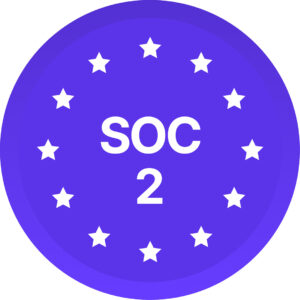Conflict, damages from natural disasters, persecution, war, famine, and oppression are rampant throughout the globe. Thousands of people undertake challenging voyages, migrating to different countries and nations where they seek safety and stability. World Refugee Day is an international day that falls on June 20th of each year. Designated by the United Nations, this day is to honour, acknowledge and celebrate the strength and courage of those who have been forced to flee and leave behind the comfort of their homes, often without having any choice. This day is for the world to pause and reflect on the journeys refugees take to escape grave dangers and extremely poor circumstances. World Refugee Day also serves as a powerful reminder each year to raise awareness and support for the millions of people who have had to flee their homes with the hopes of attaining safety and a fresh start.
Canada has exceeded the immigration target for the second year in a row by welcoming a total of 431,645 immigrants in the year 2022. Out of which 75,330 were “resettled refugees and protected persons.” Refugees and protected persons accounted for 17.2% of all new Canadian permanent residents. The following are the top 5 countries of immigration in 2022:
- India: accounting for 27%
- China: accounting for 7.2%
- Afghanistan: accounting for 5.4%
- Nigeria: accounting for 5.05%
- Philippines: accounting for 5.04%
The destination homes selected by immigrants are also worth noting. In 2022, 42.2% of newcomers chose Ontario as their initial home and destination, followed by Quebec (15.7%) and, finally British Columbia (14%).
These numbers represent the most recent statistics and data on newcomers in Canada, of which 17.2% were refugees. The challenges that refugees and newcomers face do not come to a complete stop after entering Canada.
As per the news release by Immigration, Refugees and Citizen Canada (IRCC), The Government of Canada targets to settle 465,000 permanent residents in 2023, 485,000 in 2024 and 500,000 in 2025. This plan also focuses on attracting newcomers to different regions of the country, including small towns and rural communities. As employers, it is important to be aware of the change in demographics that Canada is experiencing and will continue to experience rapidly in the future. Fostering IDEA (inclusion, diversity, equity and accessibility) is no longer an option but an absolute necessity to keep up with the change Canada is experiencing while simultaneously making all efforts to minimize the challenges and barriers that newcomers and refugees have to face due to immigration, settlement into a new country and cultural/language barriers.
This article will explore and shed light on four out of the many hardships, difficulties, and barriers of newcomers as they navigate their way into Canadian society. We will also share some suggestions for employers, leaders, and individuals on how you might be able to help tackle these challenges in Canadian workplaces.
1. Language and Cultural Barrier
Many newcomers are immediately faced with navigating and overcoming the language barrier. If English is not their first language, newcomers can experience the effects of the systemic biases that exist against people who need help communicating in English fluently. The language barrier is the number one challenge that newcomers face because it impacts their ability to communicate. Effective communication is vital for survival. Without its presence, it can create problems for newcomers, such as difficulty finding a job or source of income, getting an education, obtaining medical care, finding housing, and navigating Canadian society.
As an employer or a colleague, you can offer support by acknowledging that a language barrier may pose a challenge to your colleagues. Be aware of the unconscious or conscious biases you or others may have for those whose first language is not English. Be conscious of the biases, take an active role in managing them, and keep others accountable for when biases or damaging stereotypes emerge and determine behaviours.
2. Non-recognition of Qualifications
Refugees and newcomers are welcomed into Canada and often hope to integrate into the systems and their designated industries and sectors. Many refugees and newcomers come to Canada with a high degree of education and experience that is not Canadian. A prominent challenge faced by newcomers and refugees is the complete dismissal of their non-Canadian credentials and their lack of Canadian work experience. This systemically creates challenges and hinders their abilities to contribute to the Canadian economy and creates extreme challenges in generating a source of income for themselves and their families. This in turn can push newcomers to find employment for which they are overqualified and underpaid – contributing to the larger problem of underemployment in Canada. This systemic problem requires Canadian employers and regulatory bodies to re-assess their hiring/qualifying procedures, policies, and criteria to eliminate the hindrances newcomers face to support them in finding suitable employment and reducing the risk of financial instability.
As an employer or a hiring manager, it is crucial to re-assess the hiring criteria and credentials/number of years of experience required for the position. Is the hiring criteria possibly creating additional barriers for marginalized groups? These additional barriers may also contribute to internal systemic issues such as lack of diversity, lack of perspectives, and lack of innovation within the organization. If hiring or qualifying criteria are not relaxed, the loopholes that newcomers must jump through will continue to increase and marginalize certain groups in those industries.
3. Housing and Settlement
Canada’s housing market is often very competitive, especially the rental market in urban areas. Finding a safe, accommodative home is one of the first steps newcomers take as they begin their lives in Canada. The lack of affordable housing is a major problem for newcomers and refugees. The challenges faced by refugees and newcomers are not siloed; if newcomers are facing systemic issues in having their non-Canadian qualifications recognized, this will, in turn, lead to underemployment or unemployment, which then directly impacts their ability to find a safe and reasonable home for themselves and their families. Immigrants are relied upon in Canada to fill the labour shortage yet face systemic and deeply ingrained challenges such as the housing and settlement crises.
As an employer or colleague, realizing and acknowledging that adequate settlement support, including housing assistance and orientation programs, can alleviate the challenges for newcomers and refugees is crucial. The first step to alleviating or minimizing this challenge is to recognize newcomers’ housing crises, followed by a re-assessment of the deeper systemic issues that need to be addressed to make housing more accessible for refugees and newcomers. Ensure that your employees who are newcomers are connected to local community support systems. Furthermore, ensure that they are not underpaid for the qualifications they bring so that they can adequately provide for themselves and their families, including finding a new, safe and adequate home for themselves.
4. Access to Education, Healthcare and the Canadian Systems
Refugees and newcomers often must navigate the education system, whether it’s regarding children facing disruptions due to gaps in education, language barriers, or adults seeking to go back to school to gain Canadian credentials and qualifications to better integrate into the Canadian system. Affordability, understanding of the education system and routes, and language barriers can hinder newcomers and refugees. Additionally, accessing the healthcare system and services and understanding the Canadian healthcare system can pose obstacles for newcomers. Ensuring equitable access to education and healthcare is vital for all newcomers’ well-being and quality of life. Lastly, refugees and newcomers must manage and complete many applications, request forms, and paperwork upon arriving in Canada. This includes and is not limited to opening a bank account, acquiring a health card, and a SIN number, applying for a work permit, booking medical examination appointments, applying for financial assistance if needed, etc. Some areas considered common knowledge (i.e. filing taxes, insurance plans, etc.) can confuse newcomers and refugees.
One of the best practices for employers and newcomer support associations working with newcomers is to try to be very explicit, explain and guide newcomers and refugees on what they are required to do and when. If you have opportunities to provide information to your colleagues that can help them better navigate the Canadian systems, be sure to provide it. Please don’t assume that because some things may be common knowledge to you, they will also be common knowledge to newcomers and refugees. Support your colleagues who are newcomers and refugees by pointing them to resources and supports that can help them to understand the systems better. This can be local immigration support networks and organizations and online free resources.
World Refugee Day allows us to reflect on the journey of refugees and their resilience in rebuilding their lives in a foreign land where they experience new and novel challenges. By understanding and addressing their challenges, Canada can further evolve as a nation that embraces diversity, inclusion, and compassion. By taking and making strategic and concerted efforts, the path towards successful integration can be paved, allowing refugees to contribute to their new communities and thrive in their new homes.
On World Refugee Day, take a moment to reflect on the questions below personally or as a team:
- How can we further familiarize ourselves with the challenges faced by newcomers?
- How can we intentionally, mindfully, and respectfully connect with newcomers to learn about their experiences and gain their perspectives?
- How can we review our hiring policies, procedures, and practices to ensure that we are reaching qualified newcomers for the positions we aim to fill?
- How can I or we-as a team, acknowledge and honour World Refugee on this day and beyond?
- What is an action or a change can I/we make to alleviate some of the challenges that newcomers face in the workplace?
_________
References
Sivakumar, V. (2022). IRCC Unveils the Top 10 Source Countries of New Immigrants to Canada in 2022. CIC News.
Pruegger, J. V. & Tanasecu, A. (2007) Housing Issues of Immigrants and Refugees in Calgary. Poverty Reduction Coaltion, United Way of Calgary & Area, The City of Calgary.

